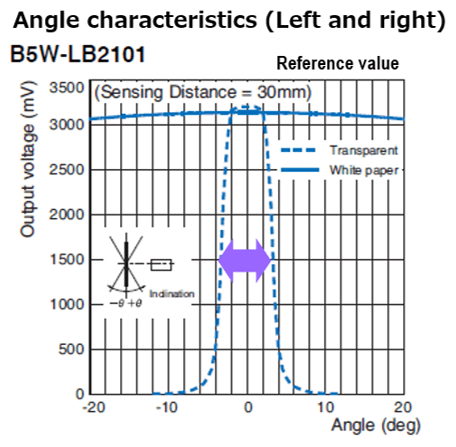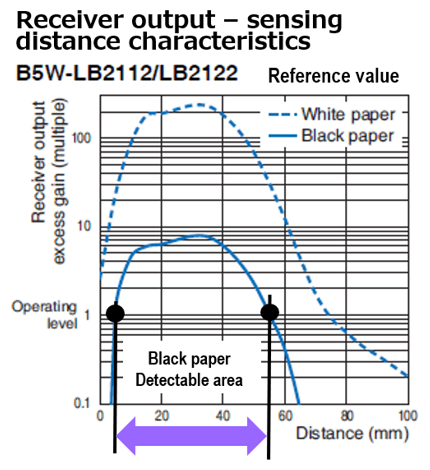Can the light convergent reflective type Optical Sensor B5W-LB detect reflective objects (mirror, glass plate) inclined at varying angles?
ID: FAQE40041E
update:
Answer
In the case of detecting a glossy object, the object’s surface should be set parallel to the sensor’s sensing surface.
Explanation
The light convergent reflective type Optical Sensor B5W-LB series has a special optical design to receive specular reflection from the sensing object. Especially when a glossy object such as a glass plate should be detected, it is necessary to consider the mounting angle of the sensor for stable detection because the receiving light intensity of the sensor significantly varies depending on the angle of the object’s glossy surface. Please refer to “Angle characteristics” (shown below) in the datasheet. According to the data, the sensor should be mounted at a right angle to the object’s surface in the vertical direction. For stable detection of glossy objects, it is recommended that the structural design and sufficient evaluation of the equipment take into account the angular variation of the sensing objects in the actual equipment.


Quick tips
This angle characteristic is the result of a measurement at the sensing distance of 30 mm. If the sensing distance can be adjusted in the equipment design, the angle characteristics can be improved by shortening the sensing distance in a range where the amount of receiving light of the sensor does not decrease, by referring to “Receiver output – sensing distance characteristics.” Use the actual equipment for consideration.

| Product category | Sensors Light Convergent Reflective Sensors/Diffuse Reflective Sensors |
|---|---|
| Classification | Usage, Applications |
| Related keywords |
|